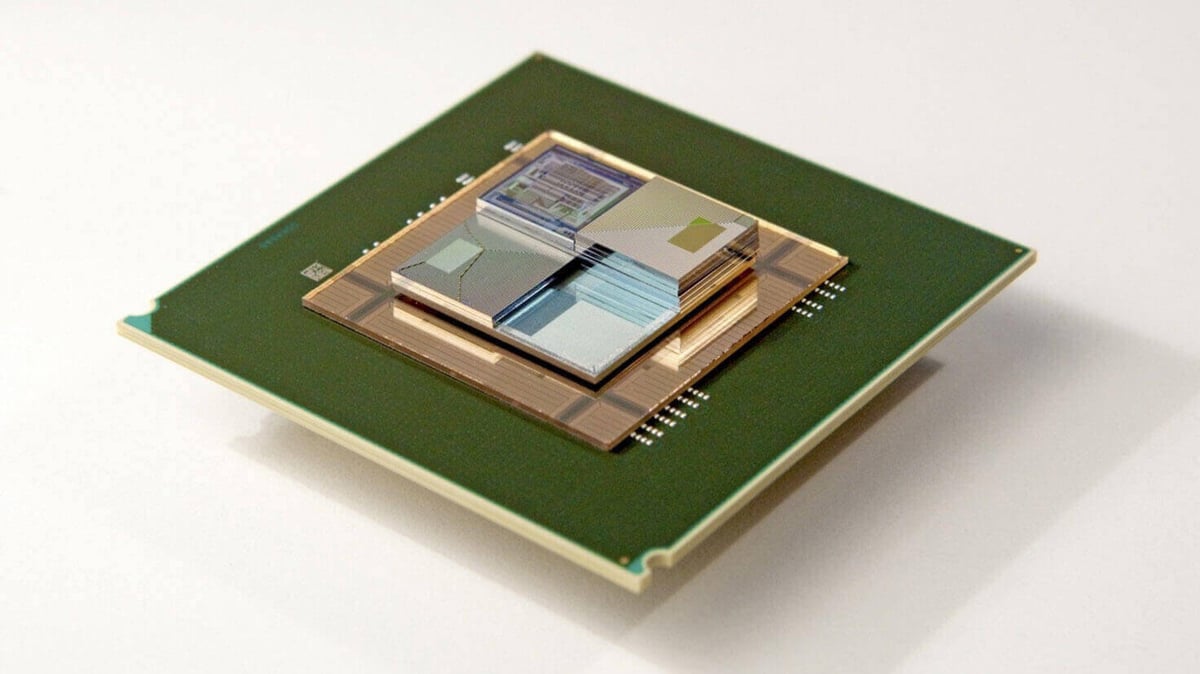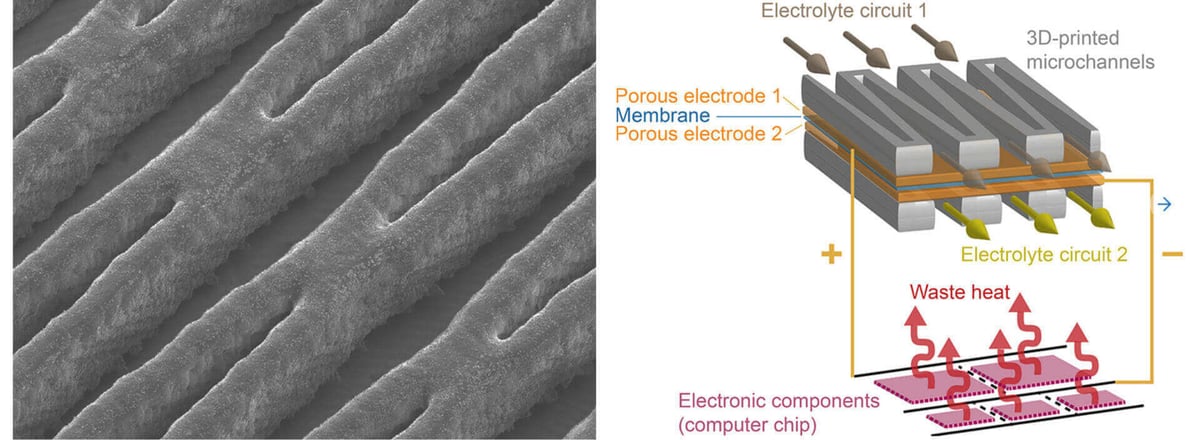IBM and ETH Zurich have used 3D printing to construct a redox flow battery that could enhance energy storage.
Researchers from the global tech giant IBM and ETH Zurich have collaborated to create a “redox flow” battery. This breakthrough development could supply stacked computer chips with electrical power while also cooling them.
This type of battery typically uses liquid electrolytes to store energy on a large scale. In this particular case, these batteries were made small enough to be applied to computer chips. The scientific team utilized two liquids as both electrolytes and cooling agents capable of dissipating heat.
According to doctoral student Julian Marschewski, the small flow battery development is the first to combine energy supply and also cooling. What makes IBM and ETH Zurich’s research truly innovative is their unique use of 3D printing technology.

Using 3D Printing To Produce “Redox Flow” Batteries
The research team used 3D printing to produce a micro-channel system to supply the battery with electrolytes. By minimizing the need for pumping power, these electrodes can seamlessly press liquid into the membrane layer. This layer is where the ions would typically flow, efficiently generating power.
The system is capable of producing 1.4 watts per square centimeter, while also leaving 1 watt over without the need of pumping. Additionally, this eliminates internal high temperatures, allowing the system to cool itself while generating power.
At the moment, the tiny flow battery still needs to generate more power than it currently does. Thus, the research team will continue to research and further develop this project. Nonetheless, both IBM and ETH Zurich believe their research could be applied to laser technology, solar cells that store electricity, and larger flow batteries enhanced by cooling channels.
In regard to solar cells, this development could allow generated energy to be stored directly in the battery cell and used later when needed. The cooling component can also help optimize the use of this power, ultimately creating a much more efficient energy storage system.
The research on these 3D printed fluidic networks was recently published in the Energy & Environmental Science journal.

License: The text of "IBM & ETH Zurich 3D Print Liquid Batteries To Enhance Energy Storage" by All3DP is licensed under a Creative Commons Attribution 4.0 International License.